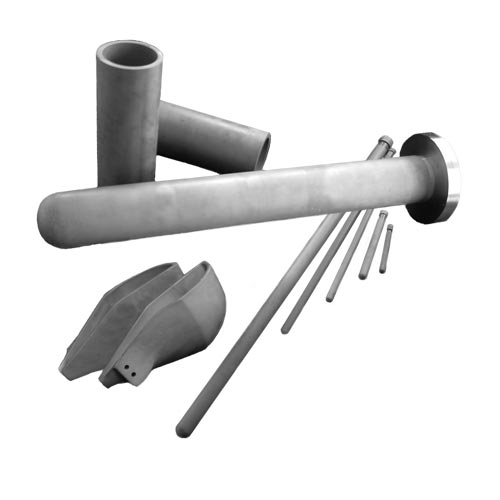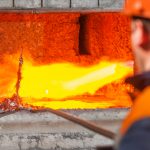Updated: Originally published on 31/05/2018
Aluminium is one of the most readily-consumed metals on the planet, with production of alloys based predominantly on aluminium topping an average 64 million tonnes per annum. This excludes the growing volume of secondary, or recycled, aluminium which is estimated at a yearly 12 million tonnes. Despite the metal’s ubiquity, there are difficulties associated with aluminium handling and processing, which necessitate advanced material solutions.
Advanced silicon nitride (Si3N4) derivatives, known as sialons, are often employed for aluminium handling and smelting applications due to their comprehensive thermodynamic qualities. In this article, we will outline the use of sialon products in both primary and secondary aluminium production in further detail.
Read More: A Guide to Technical Ceramics
Firstly, it is worth getting an overview of the industry to establish some of the challenges inherent in aluminium handling.
Aluminium Industry: Primary & Secondary Production
The aluminium industry is one of the megaliths of modern engineering and manufacturing, churning out myriad different alloys in a seemingly limitless range of configurations and formats. Due to its incredibly low density and excellent corrosion-resistant properties, it has been implemented in production at every level of human manufacturing, from food storage to aerospace development. This wide market cross-section is serviced by two distinct branches of aluminium production: primary and secondary.
Primary aluminium production refers to the chemical digestion of bauxite ore, which is the primary natural source of metallurgical aluminium oxide, or alumina (Al2O3). The electrolytic extraction process yields significant amounts of insoluble waste material, which can pose sustainability issues.
Secondary aluminium production aims to reduce the ecological impact of aluminium demand through advanced refining processes. Superior aluminium handling equipment and methodologies have significantly enhanced recycling processes, yielding novel processes that are as much as 92% more efficient than primary production with comparable products from a cost and performance perspective.

Difficulties for Aluminium Handling Equipment
Both primary and secondary aluminium handling require exceptionally durable materials with high-thermal and corrosion resistant properties. Molten aluminium is smelted at temperatures of up to 980°C (1796°F) and can chemically corrode materials through thermal spalling or wetting. This can reduce the service lives of refractory components such as thermocouples and heater tubes, resulting in significant maintenance costs.
Molten aluminium handling is routinely performed using advanced sialon ceramics, which are particularly resistant to molten aluminium corrosion and wetting. These excellent mechanical properties are associated with high strength and toughness, and outstanding degrees of formability, allowing them to be formed into a range of component shapes.
If you would like to learn more, read our previous article on The Use of Sialon in the Aluminum Industry
Sialon ceramics are commonly formed into aluminium handling components, including thermocouple sheaths, level sensors, as well as heater and riser tubes. These are exceptionally low maintenance parts, enabling improved industrial throughput and reduced mechanical downtime.
Aluminium Handling Equipment from International Syalons
International Syalons are leading suppliers of advanced sialon ceramic components for numerous applications, providing solutions for aluminium handling and processing applications. Our Syalon 101 material is optimized for non-ferrous metal forming procedures and is fast becoming the industry standard material for aluminium handling.
If you would like any more information about our aluminium handling products, please do not hesitate to contact us.

